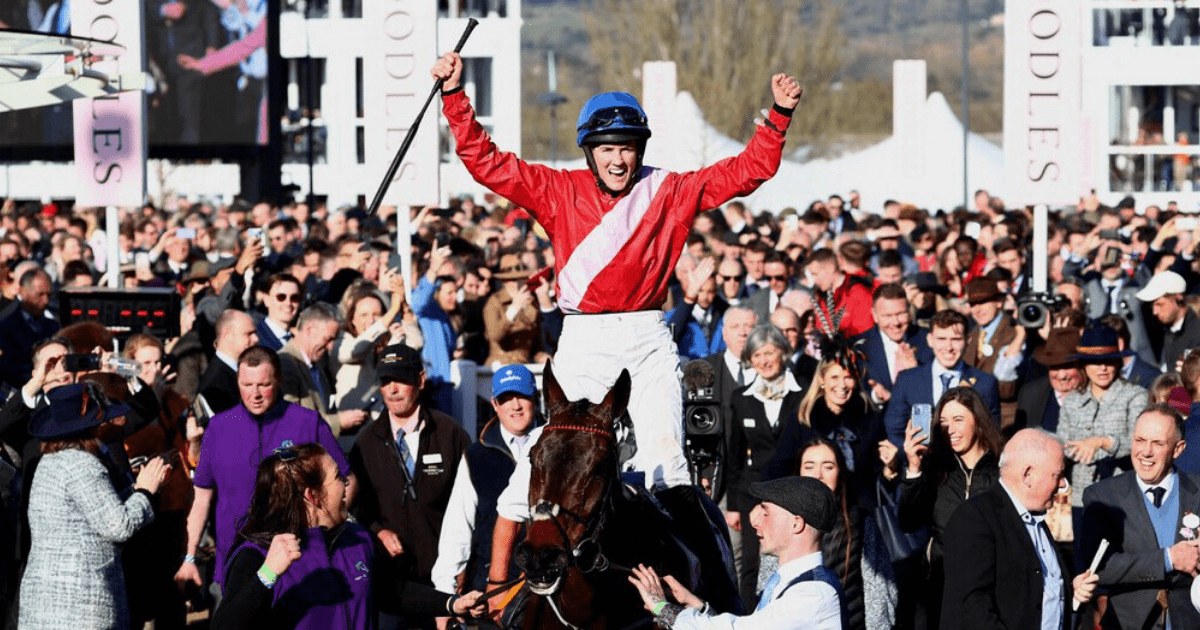Key Prize Money Breakdown
As the Cheltenham Festival 2024 kicks off, jockeys are eyeing a life-changing payday. The total prize money for key races includes:
- Cheltenham Gold Cup – £625,000 (total) £351,688 (winner)
- Champion Hurdle – £465,750 (total) £262,078 (winner)
- Queen Mother Champion Chase – £400,00 (total) £225,080 (winner)
- Ryanair Chase – £375,00 (total) £211,012 (winner)
- And more…
Jockey's Share of the Winnings
Jockeys at Cheltenham Festival usually take home 8-9% of the winning prize money. For placed jockeys, they receive around 3.5% of the placed prize money. Additionally, jockeys are guaranteed income with riding fees set at £164.74 for jump riders and £120.66 for flat racing jockeys.
Cheltenham Day-By-Day Schedule
Throughout the festival, here is a breakdown of the races scheduled each day:
- Tuesday March 12: Featuring the Supreme Novices’ Hurdle, Champion Hurdle Challenge Trophy, and more.
- Wednesday March 13: Including the Queen Mother Champion Steeple Chase, Cross Country Steeple Chase, and more.
- Thursday March 14: With races like the Ryanair Steeple Chase, Paddy Power Stayers’ Hurdle, and more.
- Friday March 15: Culminating with the Cheltenham Gold Cup, Mares’ Steeple Chase, and more.
Frequently Asked Questions
How often are racehorses trained?
Racehorses’ training frequency is determined by the horse, his level of fitness and racing schedule. Typically, they would have a daily routine consisting of exercise such as walking, trotting, and cantering, with more exertive work such as galloping or breezing several times a week to build stamina and speed. Rest days help the horse recover and avoid overtraining.
How do I condition a horse for racing?
A racehorse’s conditioning is a process that involves a combination of slow, long distance work for stamina as well as shorter, faster workouts for speed. A carefully designed regimen of exercise must gradually strengthen the horse’s cardiovascular, muscular, and skeletal system. This is done to mimic the stress of racing, without injuring or overstressing it.
What’s the role of a jockey in training a racehorse?
The jockeys are essential in the training and development of racehorses. Not only do they ride the racehorses during workouts and give feedback, but they help educate the horse on racing tactics. A good jockey is able to recognize the horse’s strengths, weaknesses and how they can be improved.
What is a horse’s first step of training?
The first phase of training a racing horse involves “breaking”, where the horse gets used to wearing a saddle and bridle as well as the weight of the rider. During early sessions, the horse must be taught to accept human contact and wear the equipment throughout his racing career.
What is the best diet for a race horse?
A racehorse’s diet must be high in quality and precisely balanced to meet the energetic demands of training and racing. It usually includes a combination high-quality hays, grains (such as oats or barsley) and commercially made feeds for racehorses. The diet should also be supplemented by essential vitamins and mineral to promote overall health and performance.
What is the age at which a horse should begin racing training?
Although horses can begin basic training at a young age, they usually start more intensive race training and conditioning around the age of two. This is when their bodies are mature enough to handle the stresses of the track while still being young and adaptable for the learning process. However, the exact timing may vary depending on the individual horse’s development and temperament.
Statistics
- The majority of racehorses in training are subject to an exercise regimen that includes being ridden six days a week.
- Racehorse mortality rates during racing have been observed to be between 1.5 to 2 deaths per thousand starts, depending on the racing jurisdiction.
- Gastrointestinal issues affect up to 90% of racehorses during their training, emphasizing the need for careful dietary management.
- The average cost to train a thoroughbred racehorse for one year can exceed $50,000, accounting for expenses related to training, boarding, and veterinary care.
- Statistically, less than 1% of thoroughbred foals born each year will go on to win a stakes race.
- Research has found that a racehorse’s stride length can increase by up to 7% following specific strength and conditioning programs.
External Links
bloodhorse.com
britishhorseracing.com
thoroughbredracing.com
thoroughbred-racing.net
equibase.com
horseracing.com
How To
How To Educate A Racehorse On Racing Strategies
To teach a racehorse racing strategies, you need to combine trackwork with guidance from a professional jockey. Practice gate starts, pace, positioning and responding to different tempos in a race. Role-play different race scenarios to teach adaptability and introduce the horse to the dynamics of a competitive environment. A well-trained horse can perform strategic moves and pace changes according to their rider’s instructions, which will have a significant impact on the outcome.

